Nicolas Saunier
How good are deep learning methods for automated road safety analysis using video data? An experimental study
Mar 12, 2025Abstract:Image-based multi-object detection (MOD) and multi-object tracking (MOT) are advancing at a fast pace. A variety of 2D and 3D MOD and MOT methods have been developed for monocular and stereo cameras. Road safety analysis can benefit from those advancements. As crashes are rare events, surrogate measures of safety (SMoS) have been developed for safety analyses. (Semi-)Automated safety analysis methods extract road user trajectories to compute safety indicators, for example, Time-to-Collision (TTC) and Post-encroachment Time (PET). Inspired by the success of deep learning in MOD and MOT, we investigate three MOT methods, including one based on a stereo-camera, using the annotated KITTI traffic video dataset. Two post-processing steps, IDsplit and SS, are developed to improve the tracking results and investigate the factors influencing the TTC. The experimental results show that, despite some advantages in terms of the numbers of interactions or similarity to the TTC distributions, all the tested methods systematically over-estimate the number of interactions and under-estimate the TTC: they report more interactions and more severe interactions, making the road user interactions appear less safe than they are. Further efforts will be directed towards testing more methods and more data, in particular from roadside sensors, to verify the results and improve the performance.
Learning Data Association for Multi-Object Tracking using Only Coordinates
Mar 12, 2024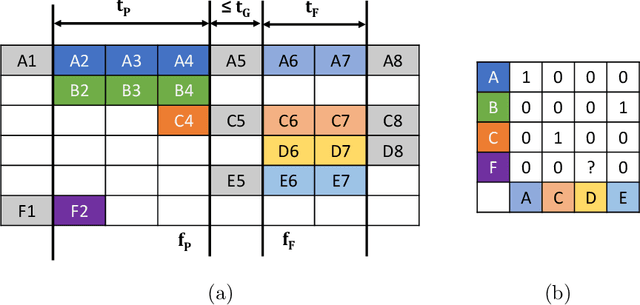

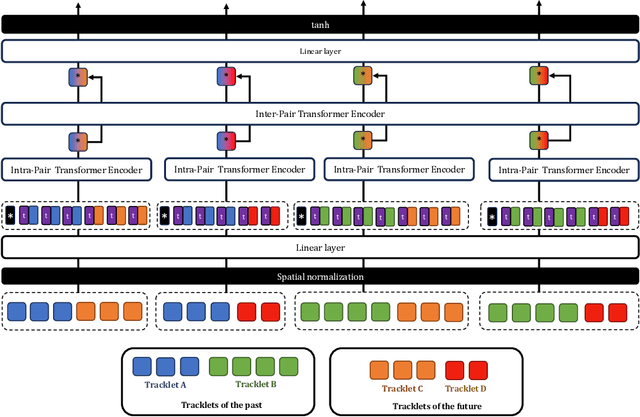
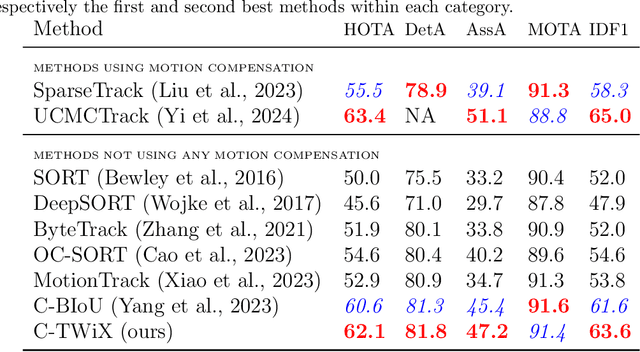
Abstract:We propose a novel Transformer-based module to address the data association problem for multi-object tracking. From detections obtained by a pretrained detector, this module uses only coordinates from bounding boxes to estimate an affinity score between pairs of tracks extracted from two distinct temporal windows. This module, named TWiX, is trained on sets of tracks with the objective of discriminating pairs of tracks coming from the same object from those which are not. Our module does not use the intersection over union measure, nor does it requires any motion priors or any camera motion compensation technique. By inserting TWiX within an online cascade matching pipeline, our tracker C-TWiX achieves state-of-the-art performance on the DanceTrack and KITTIMOT datasets, and gets competitive results on the MOT17 dataset. The code will be made available upon publication.
Detection of Micromobility Vehicles in Urban Traffic Videos
Feb 28, 2024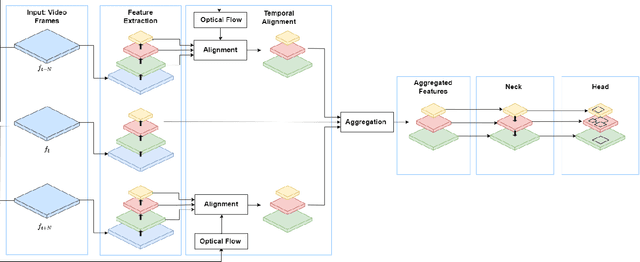

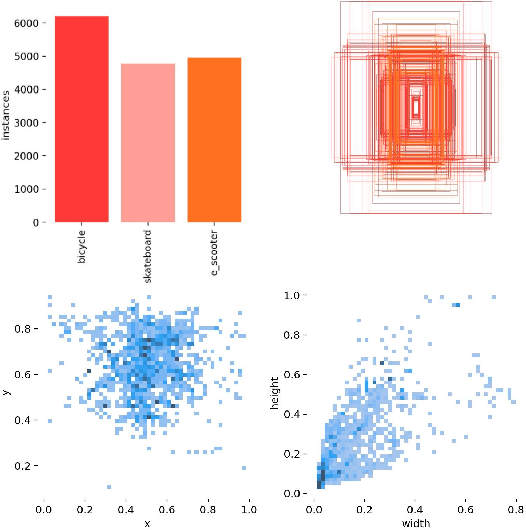

Abstract:Urban traffic environments present unique challenges for object detection, particularly with the increasing presence of micromobility vehicles like e-scooters and bikes. To address this object detection problem, this work introduces an adapted detection model that combines the accuracy and speed of single-frame object detection with the richer features offered by video object detection frameworks. This is done by applying aggregated feature maps from consecutive frames processed through motion flow to the YOLOX architecture. This fusion brings a temporal perspective to YOLOX detection abilities, allowing for a better understanding of urban mobility patterns and substantially improving detection reliability. Tested on a custom dataset curated for urban micromobility scenarios, our model showcases substantial improvement over existing state-of-the-art methods, demonstrating the need to consider spatio-temporal information for detecting such small and thin objects. Our approach enhances detection in challenging conditions, including occlusions, ensuring temporal consistency, and effectively mitigating motion blur.
Laplacian Convolutional Representation for Traffic Time Series Imputation
Dec 18, 2022Abstract:Spatiotemporal traffic data imputation is of great significance in intelligent transportation systems and data-driven decision-making processes. To make an accurate reconstruction from partially observed traffic data, we assert the importance of characterizing both global and local trends in traffic time series. In the literature, substantial prior works have demonstrated the effectiveness of utilizing low-rankness property of traffic data by matrix/tensor completion models. In this study, we first introduce a Laplacian kernel to temporal regularization for characterizing local trends in traffic time series, which can be formulated in the form of circular convolution. Then, we develop a low-rank Laplacian convolutional representation (LCR) model by putting the nuclear norm of a circulant matrix and the Laplacian temporal regularization together, which is proved to meet a unified framework that takes a fast Fourier transform (FFT) solution in a relatively low time complexity. Through extensive experiments on some traffic datasets, we demonstrate the superiority of LCR for imputing traffic time series of various time series behaviors (e.g., data noises and strong/weak periodicity). The proposed LCR model is an efficient and effective solution to large-scale traffic data imputation over the existing baseline models. Despite the LCR's application to time series data, the key modeling idea lies in bridging the low-rank models and the Laplacian regularization through FFT, which is also applicable to image inpainting. The adapted datasets and Python implementation are publicly available at https://github.com/xinychen/transdim.
Spatiotemporal Residual Regularization with Dynamic Mixtures for Traffic Forecasting
Dec 15, 2022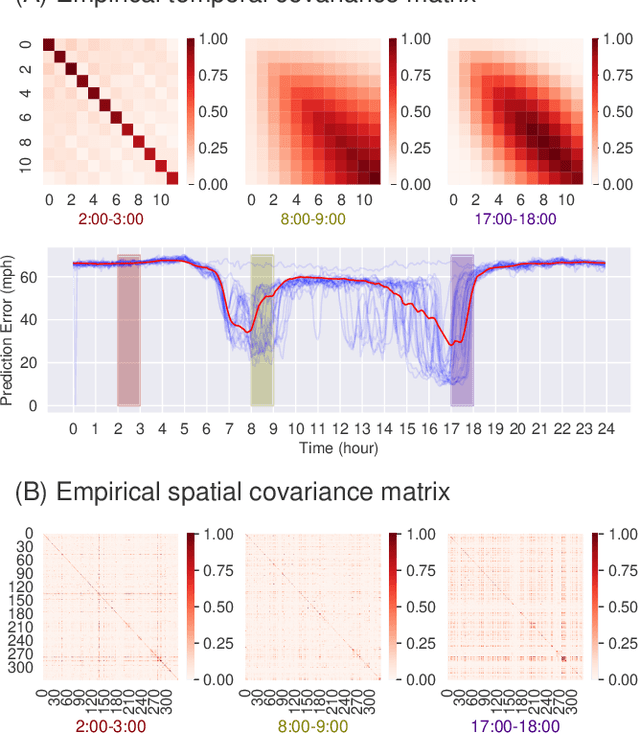
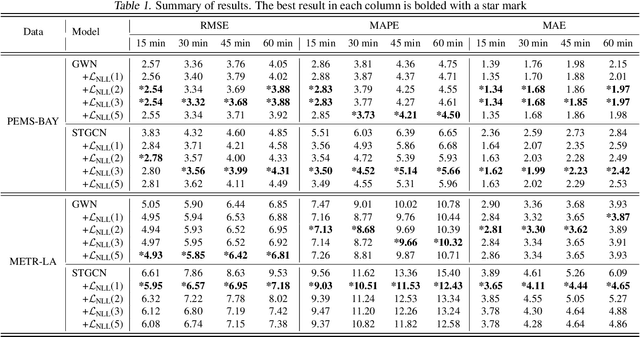
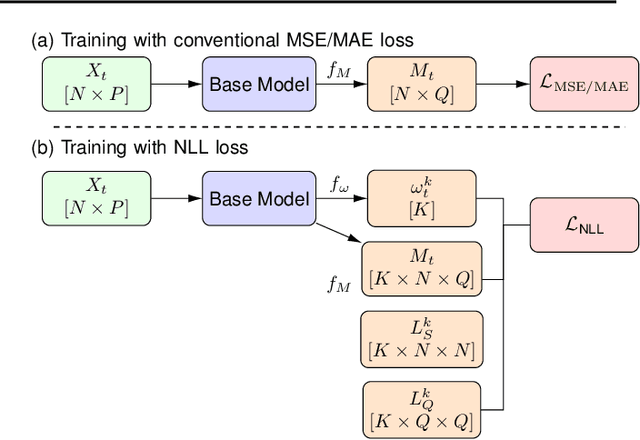

Abstract:Existing deep learning-based traffic forecasting models are mainly trained with MSE (or MAE) as the loss function, assuming that residuals/errors follow independent and isotropic Gaussian (or Laplacian) distribution for simplicity. However, this assumption rarely holds for real-world traffic forecasting tasks, where the unexplained residuals are often correlated in both space and time. In this study, we propose Spatiotemporal Residual Regularization by modeling residuals with a dynamic (e.g., time-varying) mixture of zero-mean multivariate Gaussian distribution with learnable spatiotemporal covariance matrices. This approach allows us to directly capture spatiotemporally correlated residuals. For scalability, we model the spatiotemporal covariance for each mixture component using a Kronecker product structure, which significantly reduces the number of parameters and computation complexity. We evaluate the performance of the proposed method on a traffic speed forecasting task. Our results show that, by properly modeling residual distribution, the proposed method not only improves the model performance but also provides interpretable structures.
Discovering Dynamic Patterns from Spatiotemporal Data with Time-Varying Low-Rank Autoregression
Nov 28, 2022Abstract:The problem of broad practical interest in spatiotemporal data analysis, i.e., discovering interpretable dynamic patterns from spatiotemporal data, is studied in this paper. Towards this end, we develop a time-varying reduced-rank vector autoregression (VAR) model whose coefficient matrices are parameterized by low-rank tensor factorization. Benefiting from the tensor factorization structure, the proposed model can simultaneously achieve model compression and pattern discovery. In particular, the proposed model allows one to characterize nonstationarity and time-varying system behaviors underlying spatiotemporal data. To evaluate the proposed model, extensive experiments are conducted on various spatiotemporal data representing different nonlinear dynamical systems, including fluid dynamics, sea surface temperature, USA surface temperature, and NYC taxi trips. Experimental results demonstrate the effectiveness of modeling spatiotemporal data and characterizing spatial/temporal patterns with the proposed model. In the spatial context, the spatial patterns can be automatically extracted and intuitively characterized by the spatial modes. In the temporal context, the complex time-varying system behaviors can be revealed by the temporal modes in the proposed model. Thus, our model lays an insightful foundation for understanding complex spatiotemporal data in real-world dynamical systems. The adapted datasets and Python implementation are publicly available at https://github.com/xinychen/vars.
ActAR: Actor-Driven Pose Embeddings for Video Action Recognition
Apr 19, 2022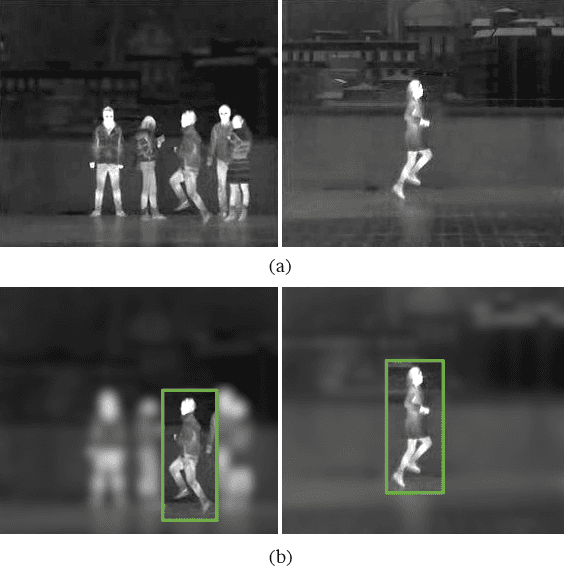

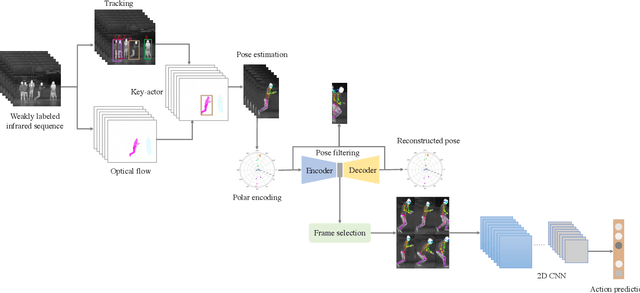
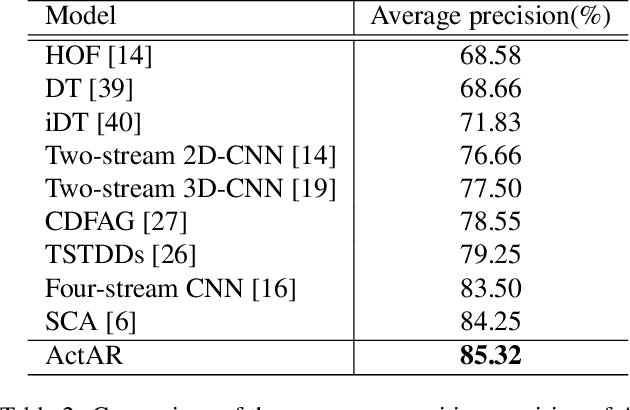
Abstract:Human action recognition (HAR) in videos is one of the core tasks of video understanding. Based on video sequences, the goal is to recognize actions performed by humans. While HAR has received much attention in the visible spectrum, action recognition in infrared videos is little studied. Accurate recognition of human actions in the infrared domain is a highly challenging task because of the redundant and indistinguishable texture features present in the sequence. Furthermore, in some cases, challenges arise from the irrelevant information induced by the presence of multiple active persons not contributing to the actual action of interest. Therefore, most existing methods consider a standard paradigm that does not take into account these challenges, which is in some part due to the ambiguous definition of the recognition task in some cases. In this paper, we propose a new method that simultaneously learns to recognize efficiently human actions in the infrared spectrum, while automatically identifying the key-actors performing the action without using any prior knowledge or explicit annotations. Our method is composed of three stages. In the first stage, optical flow-based key-actor identification is performed. Then for each key-actor, we estimate key-poses that will guide the frame selection process. A scale-invariant encoding process along with embedded pose filtering are performed in order to enhance the quality of action representations. Experimental results on InfAR dataset show that our proposed model achieves promising recognition performance and learns useful action representations.
Nonstationary Temporal Matrix Factorization for Multivariate Time Series Forecasting
Mar 20, 2022
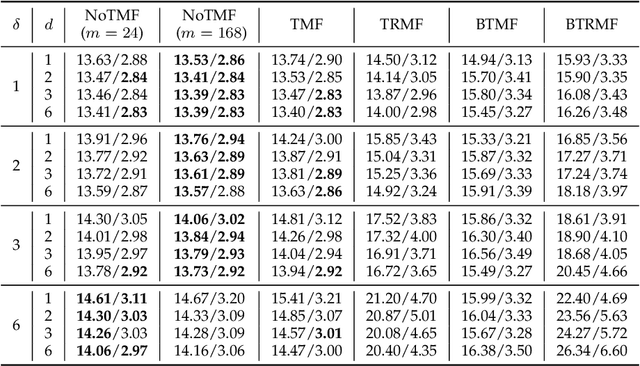
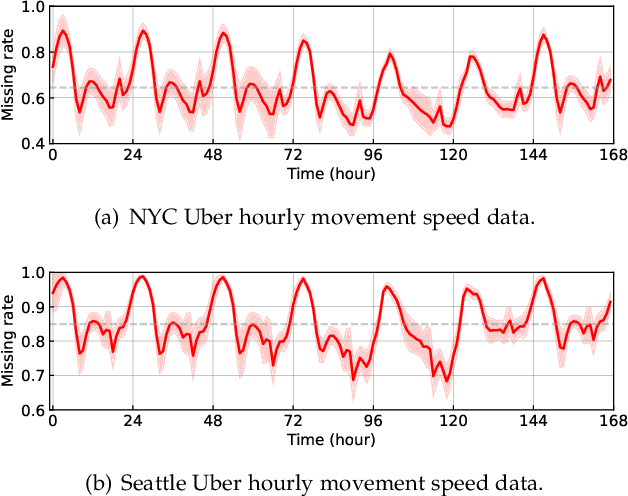
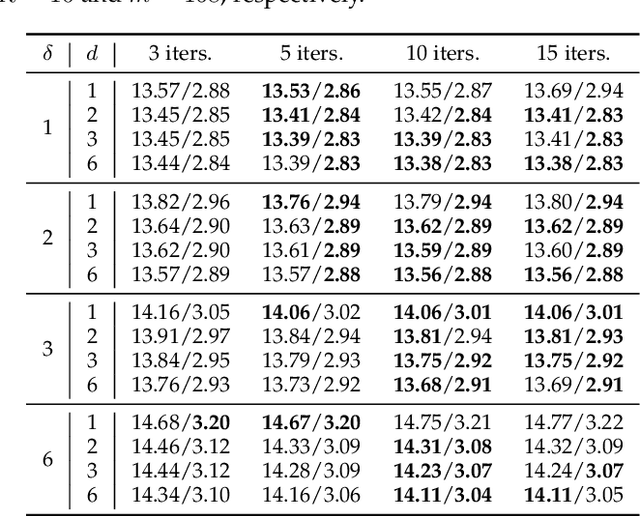
Abstract:Modern time series datasets are often high-dimensional, incomplete/sparse, and nonstationary. These properties hinder the development of scalable and efficient solutions for time series forecasting and analysis. To address these challenges, we propose a Nonstationary Temporal Matrix Factorization (NoTMF) model, in which matrix factorization is used to reconstruct the whole time series matrix and vector autoregressive (VAR) process is imposed on a properly differenced copy of the temporal factor matrix. This approach not only preserves the low-rank property of the data but also offers consistent temporal dynamics. The learning process of NoTMF involves the optimization of two factor matrices and a collection of VAR coefficient matrices. To efficiently solve the optimization problem, we derive an alternating minimization framework, in which subproblems are solved using conjugate gradient and least squares methods. In particular, the use of conjugate gradient method offers an efficient routine and allows us to apply NoTMF on large-scale problems. Through extensive experiments on Uber movement speed dataset, we demonstrate the superior accuracy and effectiveness of NoTMF over other baseline models. Our results also confirm the importance of addressing the nonstationarity of real-world time series data such as spatiotemporal traffic flow/speed.
Trajectory Clustering Performance Evaluation: If we know the answer, it's not clustering
Dec 02, 2021
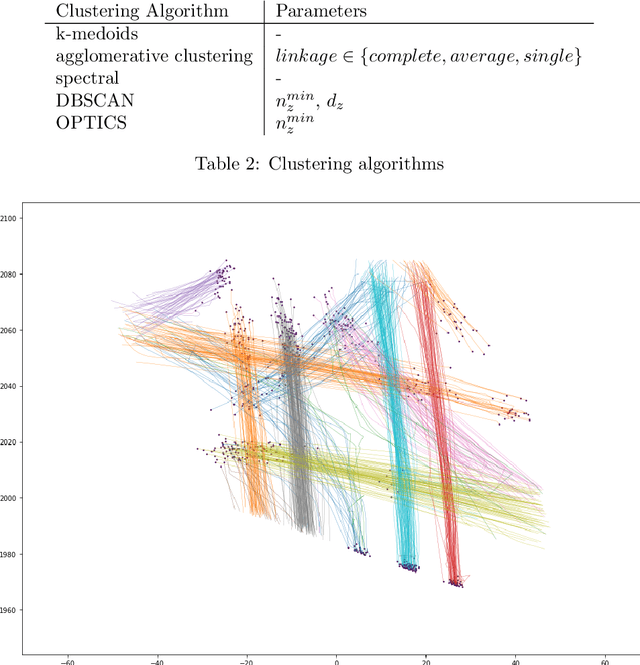
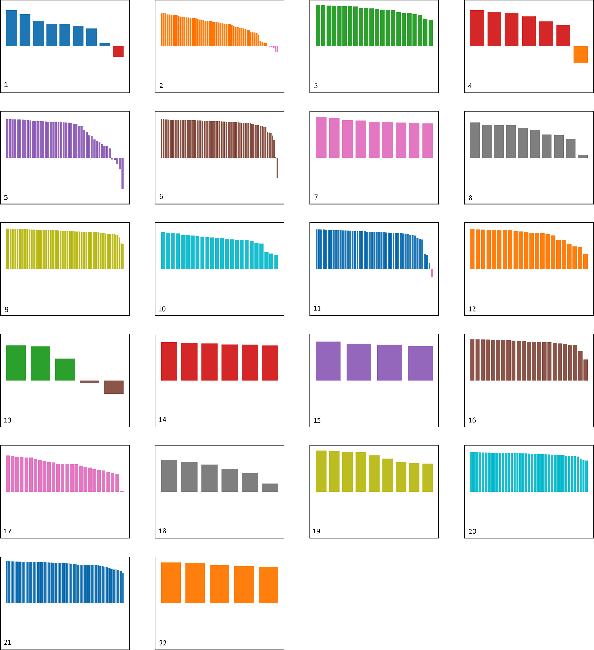
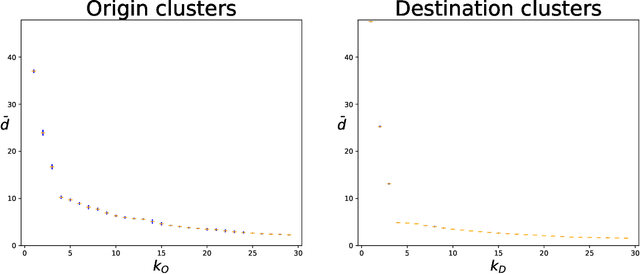
Abstract:Advancements in Intelligent Traffic Systems (ITS) have made huge amounts of traffic data available through automatic data collection. A big part of this data is stored as trajectories of moving vehicles and road users. Automatic analysis of this data with minimal human supervision would both lower the costs and eliminate subjectivity of the analysis. Trajectory clustering is an unsupervised task. In this paper, we perform a comprehensive comparison of similarity measures, clustering algorithms and evaluation measures using trajectory data from seven intersections. We also propose a method to automatically generate trajectory reference clusters based on their origin and destination points to be used for label-based evaluation measures. Therefore, the entire procedure remains unsupervised both in clustering and evaluation levels. Finally, we use a combination of evaluation measures to find the top performing similarity measures and clustering algorithms for each intersection. The results show that there is no single combination of distance and clustering algorithm that is always among the top ten clustering setups.
PolyTrack: Tracking with Bounding Polygons
Nov 02, 2021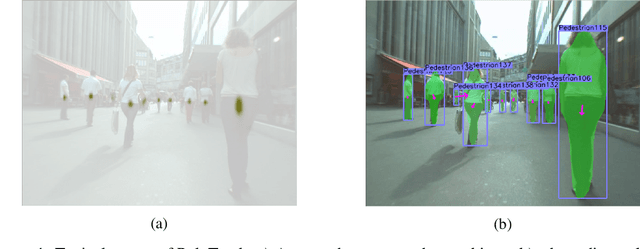

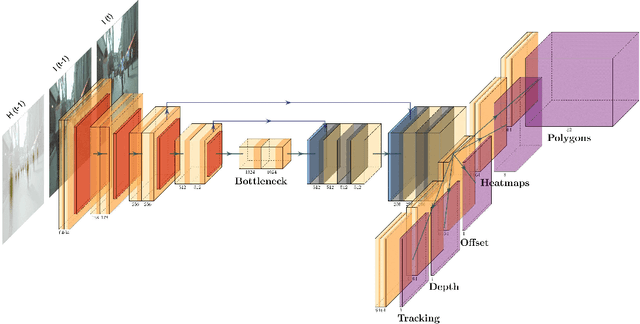
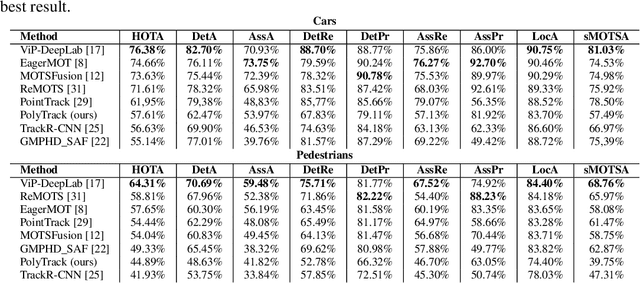
Abstract:In this paper, we present a novel method called PolyTrack for fast multi-object tracking and segmentation using bounding polygons. Polytrack detects objects by producing heatmaps of their center keypoint. For each of them, a rough segmentation is done by computing a bounding polygon over each instance instead of the traditional bounding box. Tracking is done by taking two consecutive frames as input and computing a center offset for each object detected in the first frame to predict its location in the second frame. A Kalman filter is also applied to reduce the number of ID switches. Since our target application is automated driving systems, we apply our method on urban environment videos. We trained and evaluated PolyTrack on the MOTS and KITTIMOTS datasets. Results show that tracking polygons can be a good alternative to bounding box and mask tracking. The code of PolyTrack is available at https://github.com/gafaua/PolyTrack.
 Add to Chrome
Add to Chrome Add to Firefox
Add to Firefox Add to Edge
Add to Edge